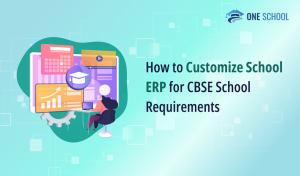1. Define Your Needs Before You Compare Features
Before you go ahead and begin assessing platforms, chart out your school’s specific requirements. An urban metro-based large CBSE school will have a dissimilar requirement profile compared to a regional coaching centre or a Montessori school.
Key areas to assess include:
- How big and complicated are your operations (like how many students, locations, or departments you have)?
- What’s your school structure like (grande, how you test children)?
- How do you manage things like admissions, attendance, payments, HR, and transport?
- How do you need to communicate with parents and staff (text, email, app notifications)?
- What rules and reports do you have to comply with (such as CBSE, state regulations, or audits)?
When you know what’s annoying you and what matters to you, it will be simpler to select the ideal solutions for your school.
2. Insist on Comprehensive, Modular Functionality
The software must span the entire school cycle, not a section of it. Some vendors provide piecemeal elements such as tracking fees or logs of attendance. But that results in discontinuous systems and silos of data.
Look for a unified platform that covers:
- Admissions management (online forms, document uploads, status tracking)
- Student information system (SIS) with academic history, grades, and attendance
- Timetable and exam management
- Online fee collection and auto-generated receipts
- Staff and payroll management
- Library, transport, and hostel modules (if relevant)
- Communication tools (email, SMS, push notifications, parent portals)
Modular solutions allow you to start small and scale as your needs evolve, without having to switch platforms.
3. Evaluate User Experience and Adoption
Even the most feature-rich software is ineffective if it’s too complex for everyday users. Many schools face internal resistance because systems are hard to use or lack proper onboarding support.
Prioritize platforms that offer:
- Intuitive dashboards for admins, teachers, parents, and students
- Mobile app support, especially for parents
- Customizable roles and permissions
- Training, onboarding, and post-sale support
Get everyone involved in a product demo—especially admin, trainers, and the IT helpdesk. Their thoughts on how easy it is to use can really decide if this thing works out or not.
4. Prioritize Data Security and Compliance
Indian schools handle sensitive student data and financial transactions. With growing concerns around data privacy, your school management software must follow strict security protocols.
Key things to check:
- Is it stored on secure, encrypted cloud servers?
- Does it have regular data backups and access logs?
- Is it IT regulations compliant in India, and education board guidelines compliant?
- Are there audit logs for all user actions?
Request documentation on security practices before committing to any vendor.
5. Choose a Scalable, Future-Ready Platform
Education in India is changing, especially with the National Education Policy (NEP) encouraging digital learning, ongoing assessments, and learning that brings different subjects together. Your SMS should be built to adapt.
A future-ready solution offers:
- NEP-aligned academic structures and flexibility in grading/reporting
- Support for hybrid learning environments
- Integration capabilities with third-party tools (LMS, accounting software, biometric devices)
- AI and analytics features for performance insights, trend tracking
The platform should grow with you, not restrict your ability to innovate.
6. Consider Vendor Reputation and Support
In software, the vendor’s service quality matters as much as the product itself. You’re not just buying software—you’re entering a long-term partnership.
Assess the vendor on:
- Experience with Indian schools and regional needs
- Customer support quality (availability, language, response time)
- Client testimonials and case studies
- Frequency of product updates and improvements
Don’t hesitate to ask for references or speak directly with schools currently using the platform.
The Conclusion
Selecting the proper school management software is not only a technology choice, but also a strategic investment in your school’s future. The proper solution not only automates tasks, but also liberates your staff, builds parent trust, and opens up space for what really counts: quality education.
Want to make things run smoother at your school? A good, solid platform that can grow with you is key. It can help you make smarter choices with data and connect everyone in your school community better. The future of education in India is going digital, integrated, and focused on students – and it’s happening now. Let’s make that happen with OneSchool.

At OneSchool, Nishant Joshi manages projects centered on school ERP solutions as a technology strategist and project manager. He focuses on putting in place and refining digital systems that support improved educational outcomes, increase administrative effectiveness, and improve school operations.






